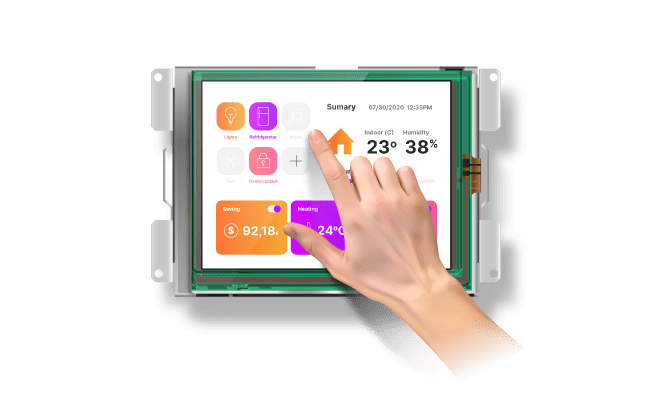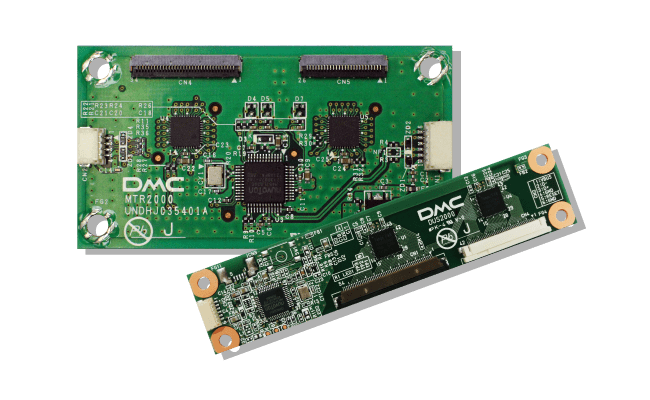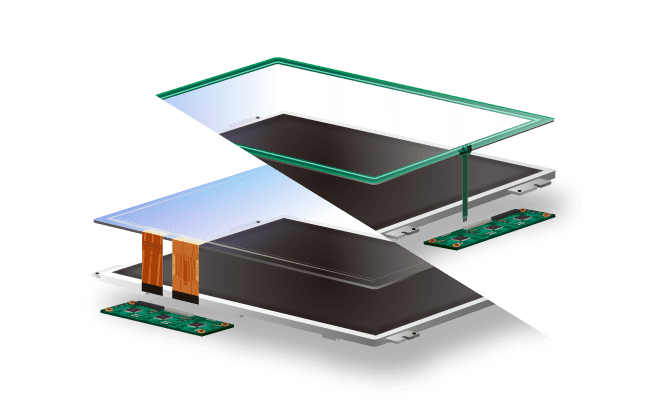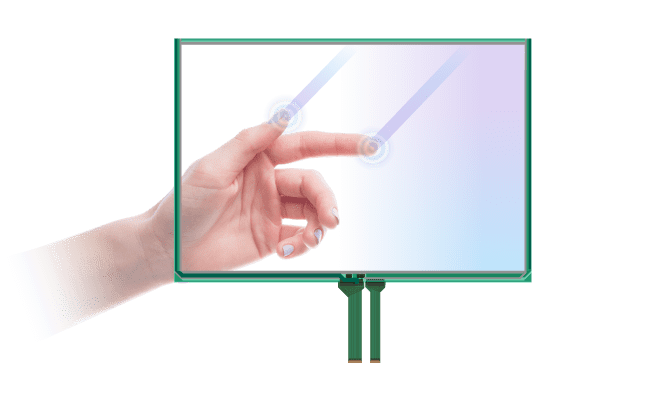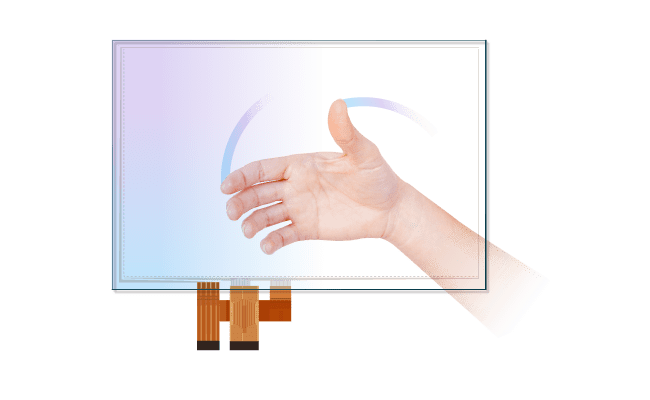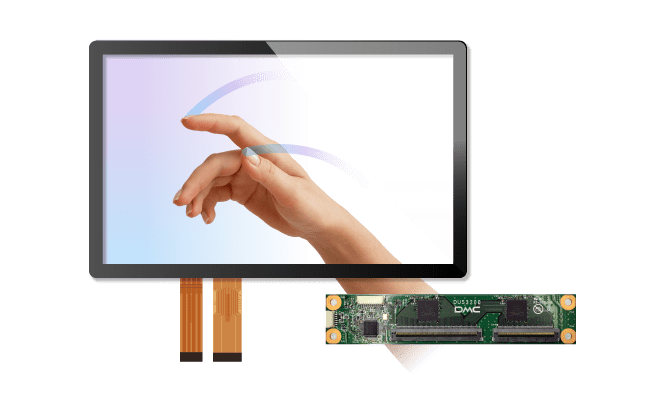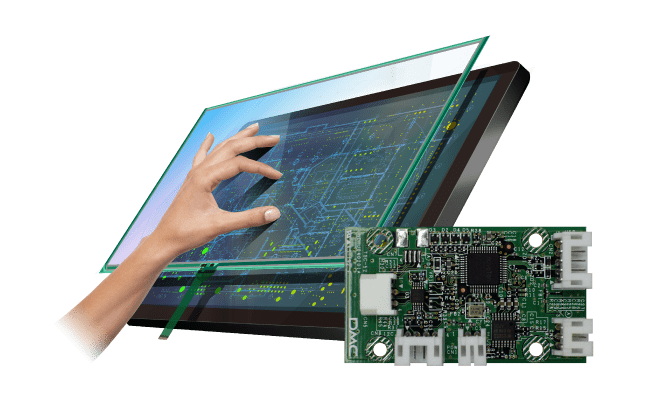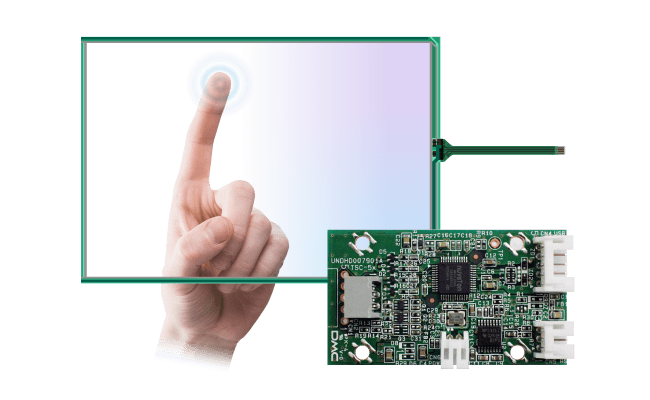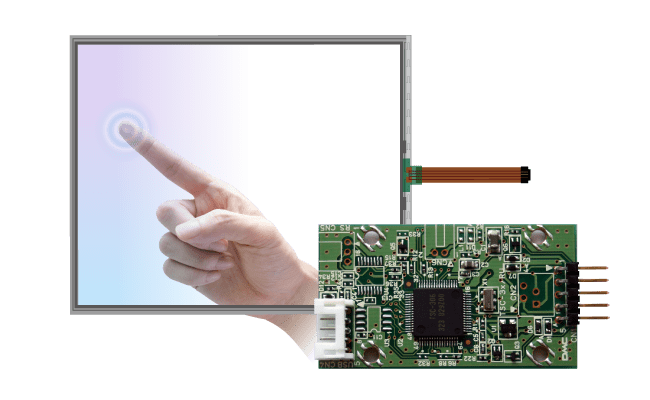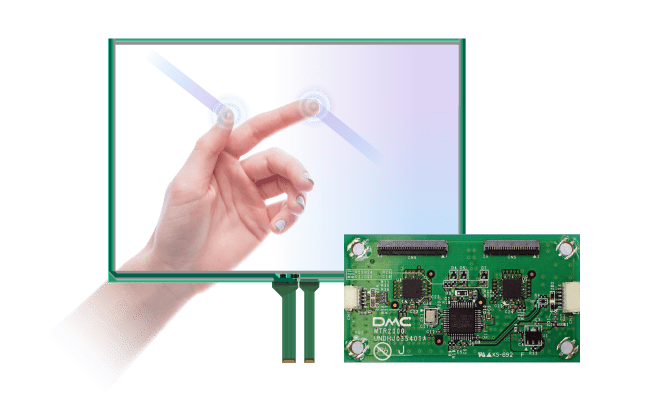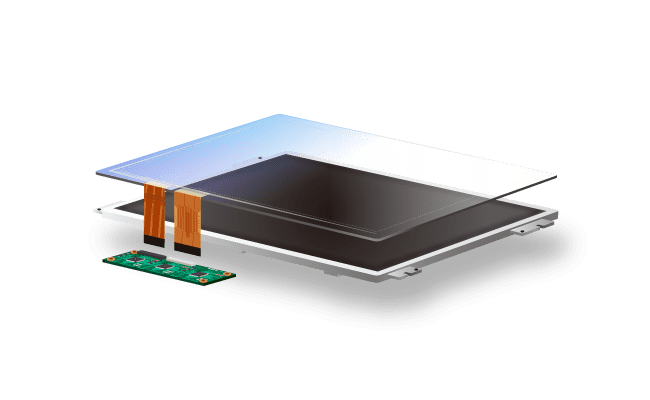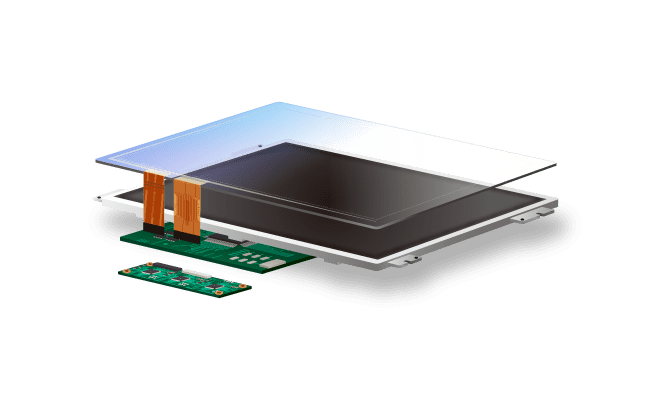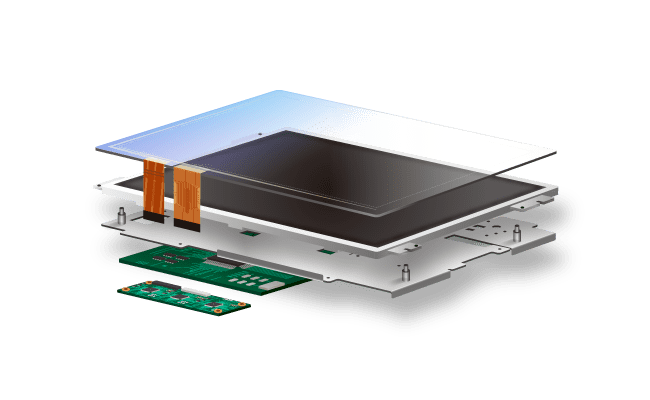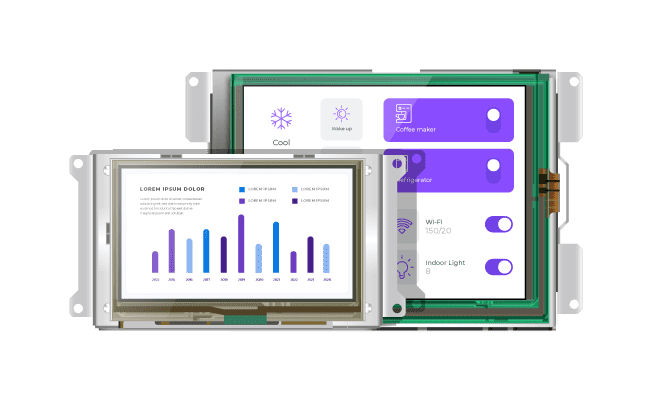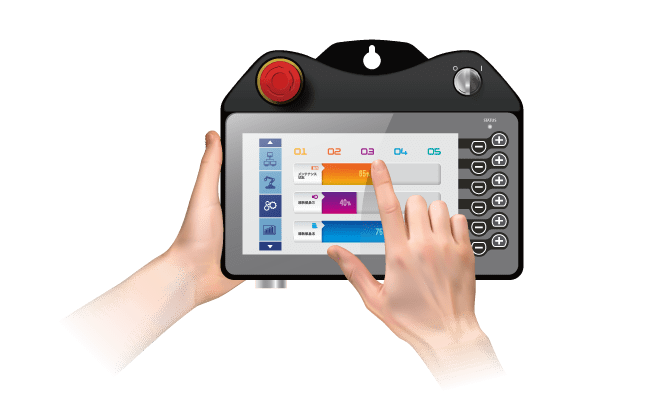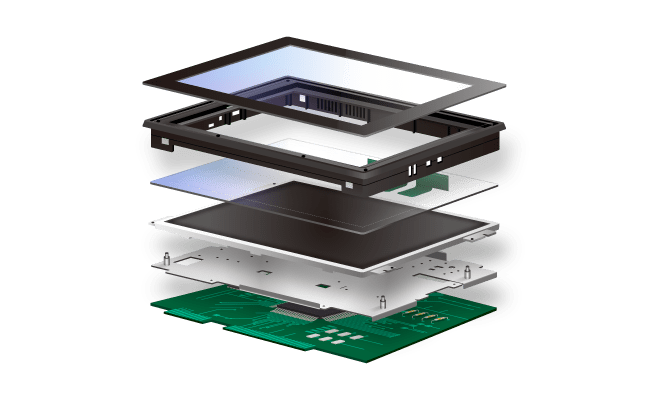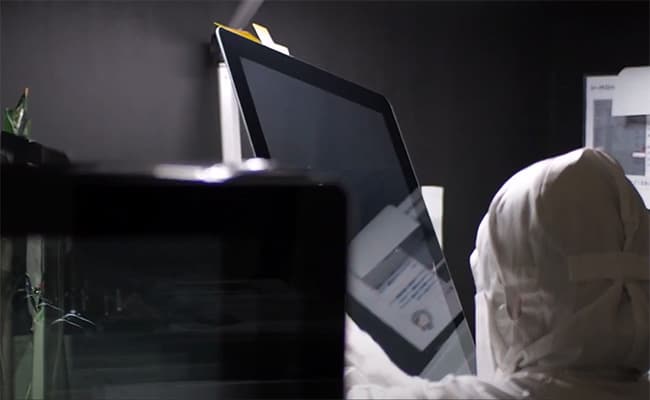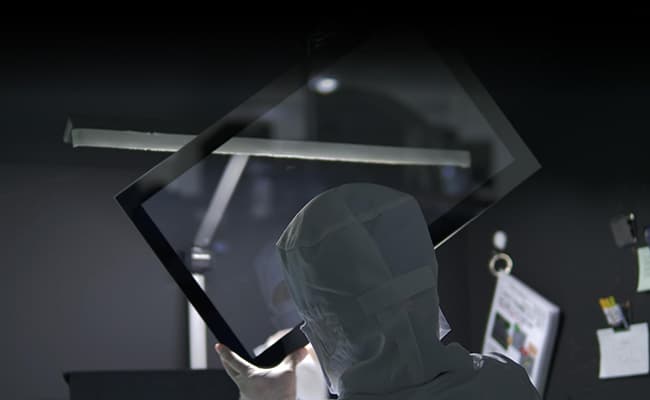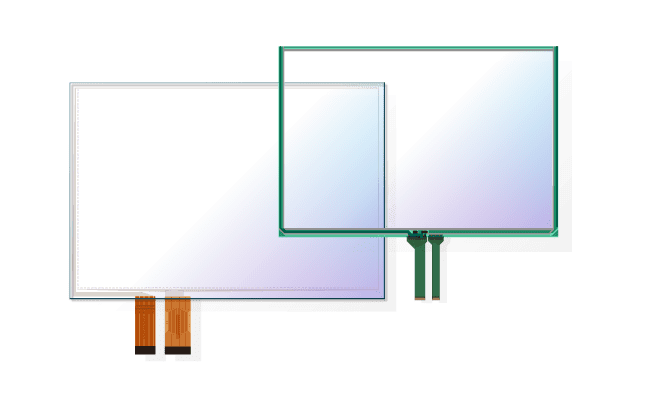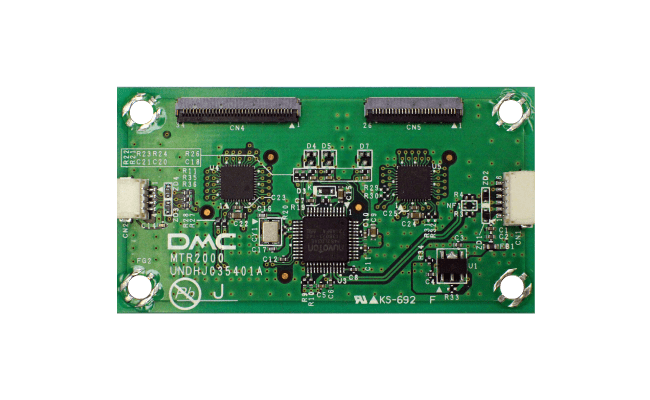Principle of resistive Touchscreen
Touchscreen, which are indispensable for touch operation in various systems such as terminal terminals, medical and beauty equipment, business applications, and industrial equipment, are deeply rooted in modern life. Here, we explain the detection principle of resistive touchscreen, which has been introduced to various fields in industrial applications.
Analog 4-wire single touch detection
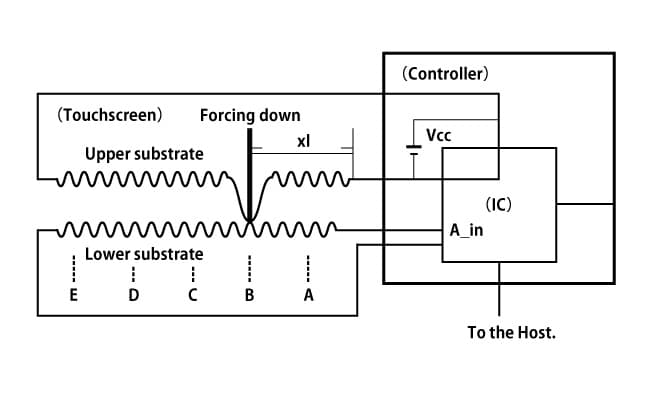
In the 4-wire resistive touchscreen, materials with transparent conductive films (mainly PET film or glass) are laminated in the direction that the transparent conductive films face each other, and when pressed with a finger or a pen, the transparent conductive films make contact with each other, resulting in touchscreen input. The materials facing each other up and down form the X-coordinate circuit on one side and the Y-coordinate circuit on the other.
When measuring the X coordinate, a voltage is supplied to the electrodes of the X coordinate axis of the upper board with one electrode as Vcc and the other as ground (GND)*. When the touchscreen is input (pressed down) in this state, the upper board and lower board make contact and the voltage value of the X coordinate resistive film at the input point (xl) is detected by the lower board (A_in). This voltage value increases on the Vcc side and becomes A_in= Vcc at point E. On the GND side, the detected voltage value decreases and becomes A_in=0V* at point A. A/D conversion is performed from this A_in voltage value to calculate the coordinate data.
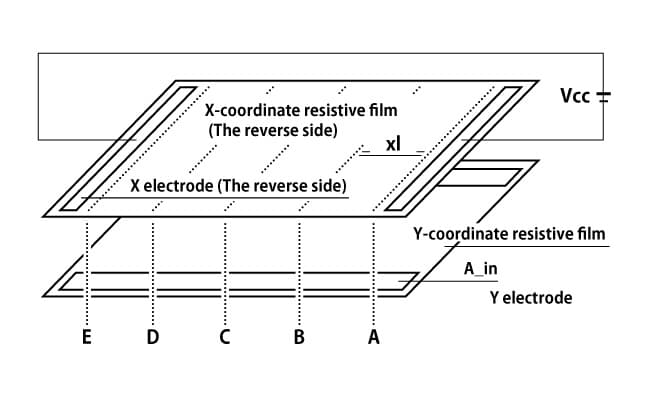
Next, voltage is supplied to the Y-coordinate axis electrodes on the lower board, and the upper electrode measures the Y-coordinates. Losses in the controller circuit and touchscreen are excluded. In reality, the actual voltage detection width will be smaller than Vcc - GND due to losses in the circuit.
Analog 4-wire multi-touch detection
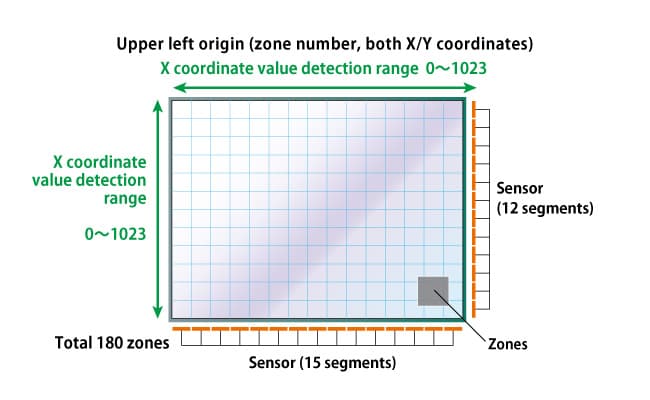
Touch detection range (example of 15 x 12 division)
A single cell performs the same function as a single 4-wire resistive touchscreen. In the example image, a total of 180 small touchscreens are deployed to form a single touchscreen.
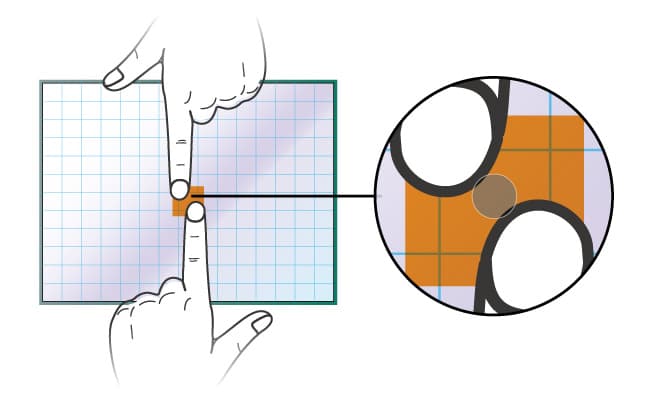
Pressing two points in the same cell
Similar to the 4-wire touchscreen, only one touch point can be recognized at the same time for a single cell. Basically, two touches in the same cell are not accurate, but if multiple touches occur in the same cell, the middle point is generally output as a single input point that is far from both input points.
Analog 5-wire single touch detection
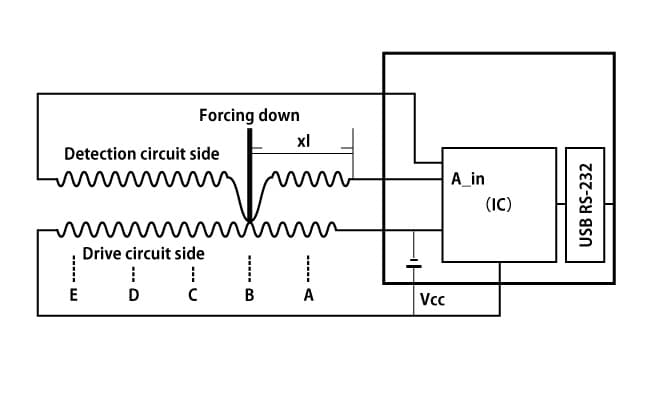
In a 5-wire resistive touchscreen, materials with transparent conductive films (mainly PET film or glass) are bonded together in the direction that the transparent conductive films face each other, and when pressed with a finger or pen, the transparent conductive films make contact with each other, resulting in touchscreen input. The materials facing each other up and down form the X/Y plane coordinate circuit on one side and the detection circuit on the other.
When measuring the X coordinate, supply voltage to the electrodes of the X axis coordinate axis of the lower board with one electrode as Vcc and the other electrode as ground (GND)*. When the touchscreen is input (pressed down) in this state, the upper board and lower board make contact and the voltage of the X coordinate resistive film at the input point (xl) is detected by the upper board (A_in). This voltage value becomes larger on the Vcc side, and at point E, A_in=Vcc. On the ground electrode side, the detected voltage value becomes smaller, and at point A, A_in= 0V*. From this voltage value of A_in, A/D conversion is performed to calculate the coordinate data.
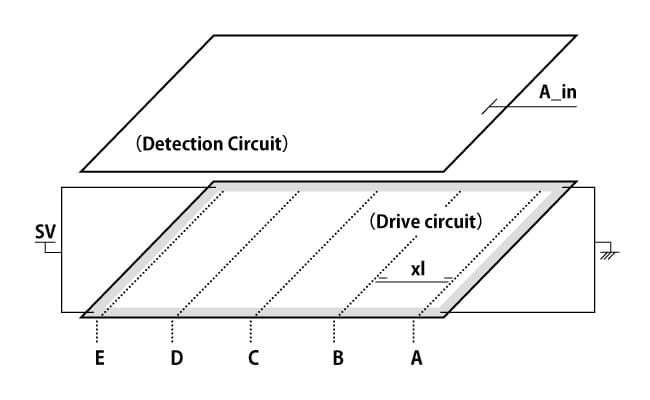
In the same way, apply a voltage to the Y coordinate axis and measure the Y coordinate, and repeat these steps alternately to determine the coordinate value of the input point. Losses in the controller circuit and touchscreen are excluded. In reality, the actual voltage detection width will be smaller than Vcc - GND due to losses in the circuit.


